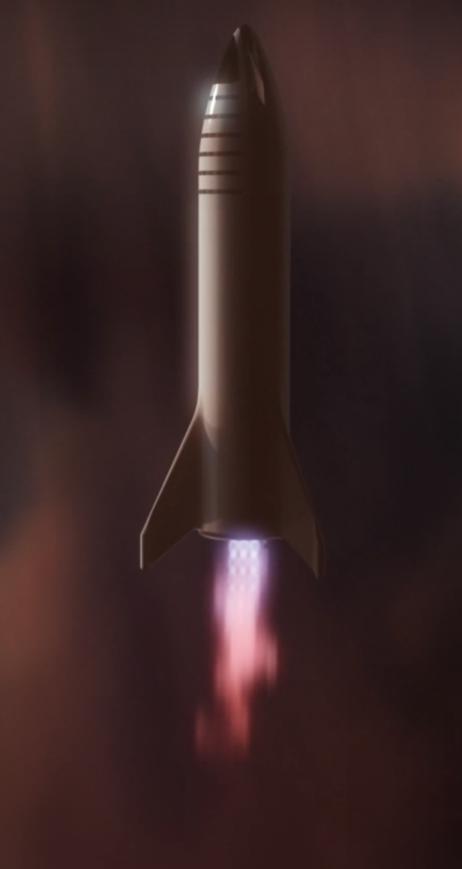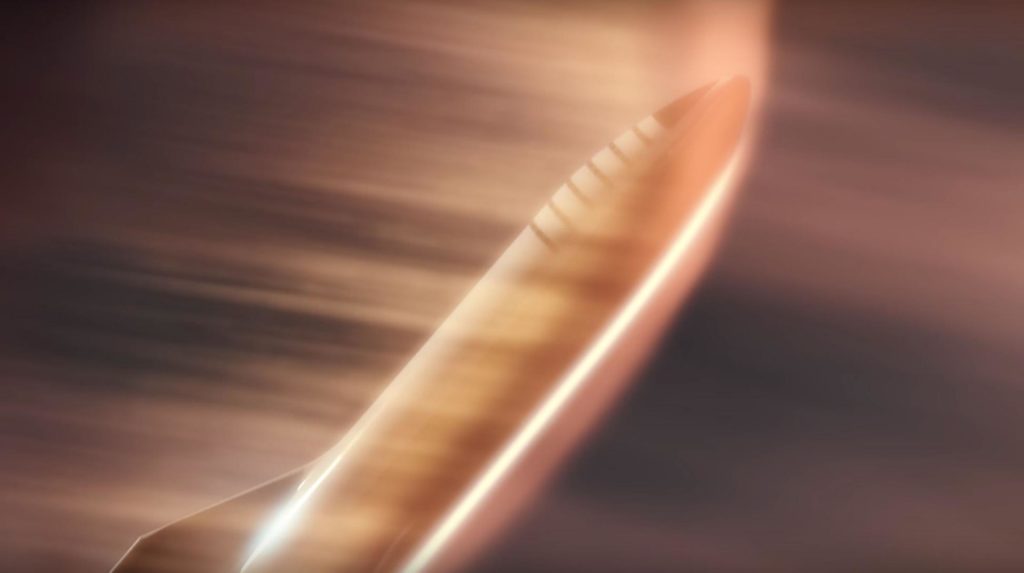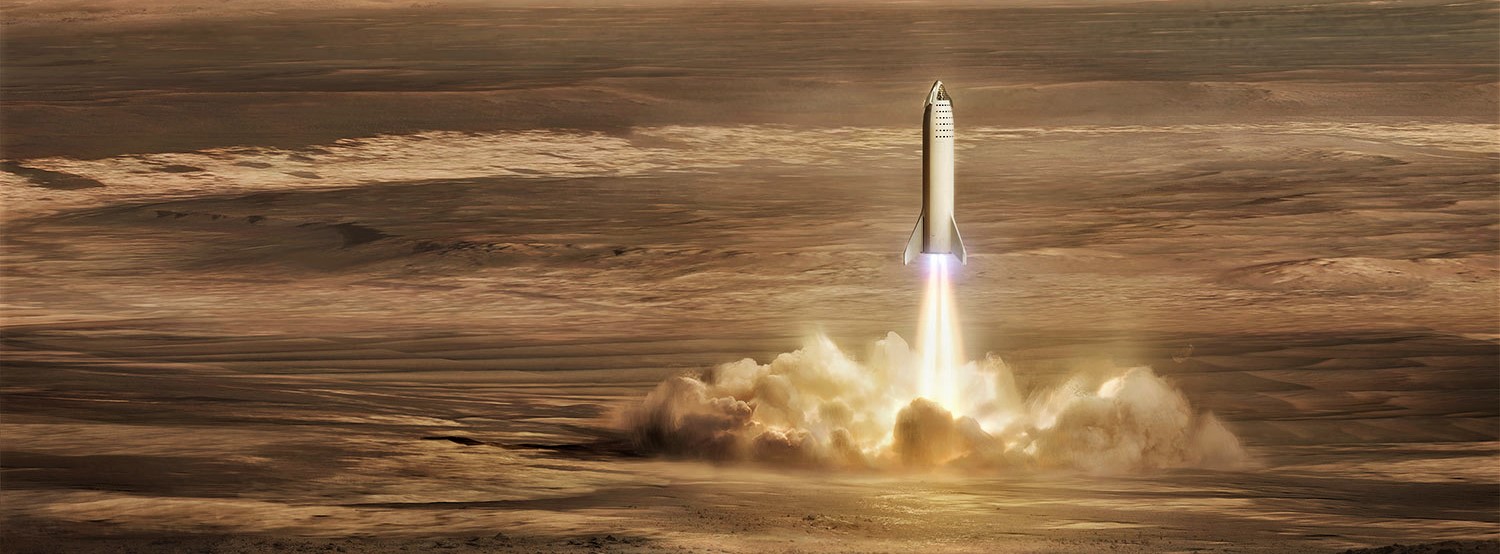
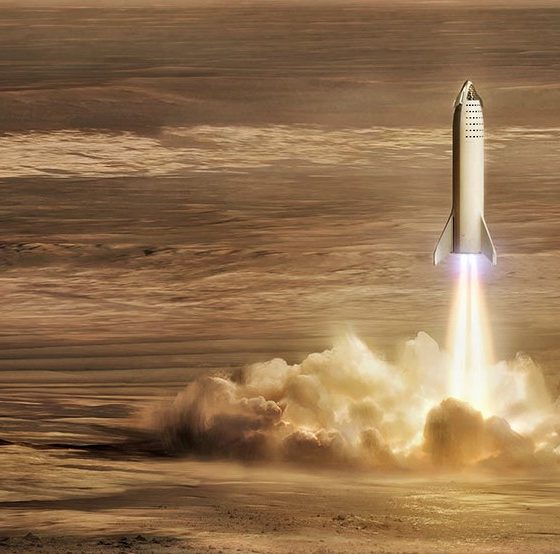
News
SpaceX seeks licenses for BFR spaceship prototype hop test campaign
Recent filings confirm that SpaceX has begun the process of applying for permits and licenses that will eventually allow the company to legally conduct hop and flight tests of a BFR spaceship prototype at its prospective South Texas development facilities.
While the FAA’s Office of Commercial Space Transportation does not provide public access to pending applications, the FCC’s Experimental Licensing System published a summary of SpaceX’s request, briefly describing a series tests to be performed with a “Vertical Takeoff, Vertical Landing (VTVL) vehicle” in the near future.
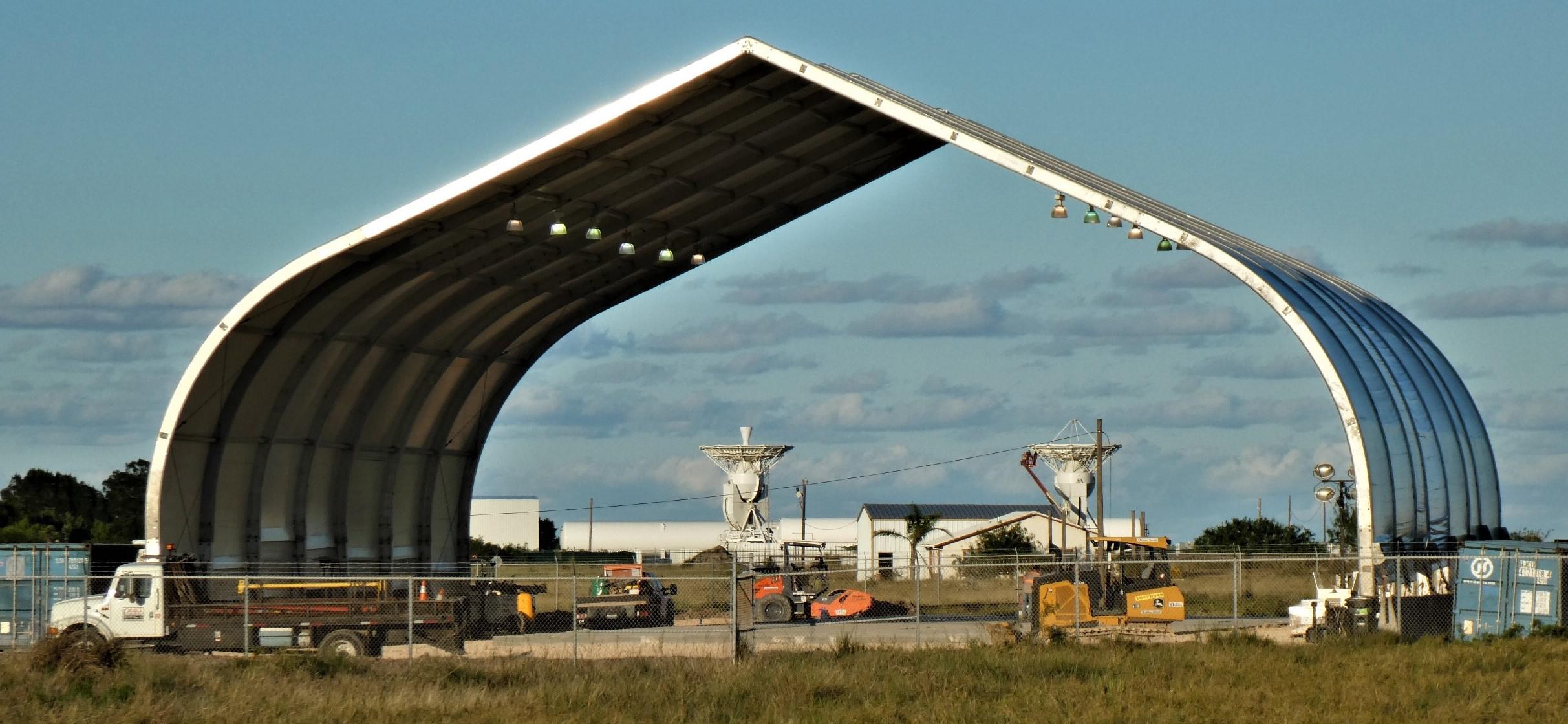
While official plans to perform Grasshopper-style hop tests with a full-scale prototype of the BFR’s upper stage – known as BFS (Big Falcon Spaceship) – have been public knowledge in some form for over a year, SpaceX’s short description of the initially planned hop test activities offers a much more accurate view of the actual scope of those tests.
Most notably, SpaceX describes a campaign “divided into low‐altitude and higher‐altitude tests” that range from a ceiling of 500m (~1650 ft) to 5000m (~16,500 ft) and an overall length of ~100 to 360 seconds (1.5 to 6 minutes).
“The tests themselves are divided into low‐altitude and higher‐altitude tests. The low‐altitude tests stay below 500 meters in altitude and last approximately 100 seconds. These tests will be run approximately three times per week during the initial portion of the program. The higher‐altitude tests can go as high as 5 km and will occur approximately once per week. These tests last approximately 6 minutes.” – SpaceX, 11/20/2018, FCC File 0931-EX-CN-2018
- A BFS attempts a Mars landing in this official updated render. (SpaceX)
- It’s unclear just how high-fidelity the first spaceship prototype will be, but it could look similar to this. (SpaceX)
- Eventually, SpaceX may graduate into high-speed, high-altitude flight tests of the prototype spaceship to fully test the design of its its control surfaces and “ultra-lightweight heat shield”. (SpaceX)
Tireless local (and not so local) observers continue to cover SpaceX’s and the company’s contractors’ day-to-day activities in Boca Chica, Texas and have recently played witness to the erection of part of a massive tent at an adjacent lot, appearing to be about the same scale as the tent SpaceX technicians and engineers are currently building the first prototype spaceship inside. They might not have the appeal of a big, shiny, expensive factory, but tents are extremely convenient, flexible, scalable, and affordable, lending themselves perfectly to long-term but inherently temporary projects like SpaceX’s BFR prototype development.
Meanwhile, roughly 2.5 km East of SpaceX’s newly raised tent, antennas, and propellant storage tanks, the company has begun in earnest the removal and repurposing of several hundred thousand tons of soil that have been sat atop a prospective launch pad and hangar site for 3+ years. The task of using its sheer mass and the force of gravity to help settle and strengthen the otherwise marshy, sandy ground now complete, the massive dirt pile can be repurposed to support the construction of causeways, access roads, landing pads, and more. By all appearances, SpaceX has begun to do just that and the dirt pile is rapidly shrinking as it is redistributed across the company’s local property.
There is activity. pic.twitter.com/A8JYw6vdW6
— Nehkara (@Nehkara) October 13, 2018
Once complete, the area will be transformed from flat marshland into a group of facilities capable of supporting critical flight tests of BFR’s spaceship/upper-stage, if not eventual orbital launches of integrated boosters and spaceships. According to recent public statements from CEO Elon Musk and COO Gwynne Shotwell, SpaceX is targeting the start of those hop tests as early as late-2019.

News
Ford cancels all-electric F-150 Lightning, announces $19.5 billion in charges
“Rather than spending billions more on large EVs that now have no path to profitability, we are allocating that money into higher returning areas, more trucks and van hybrids, extended range electric vehicles, affordable EVs, and entirely new opportunities like energy storage.”
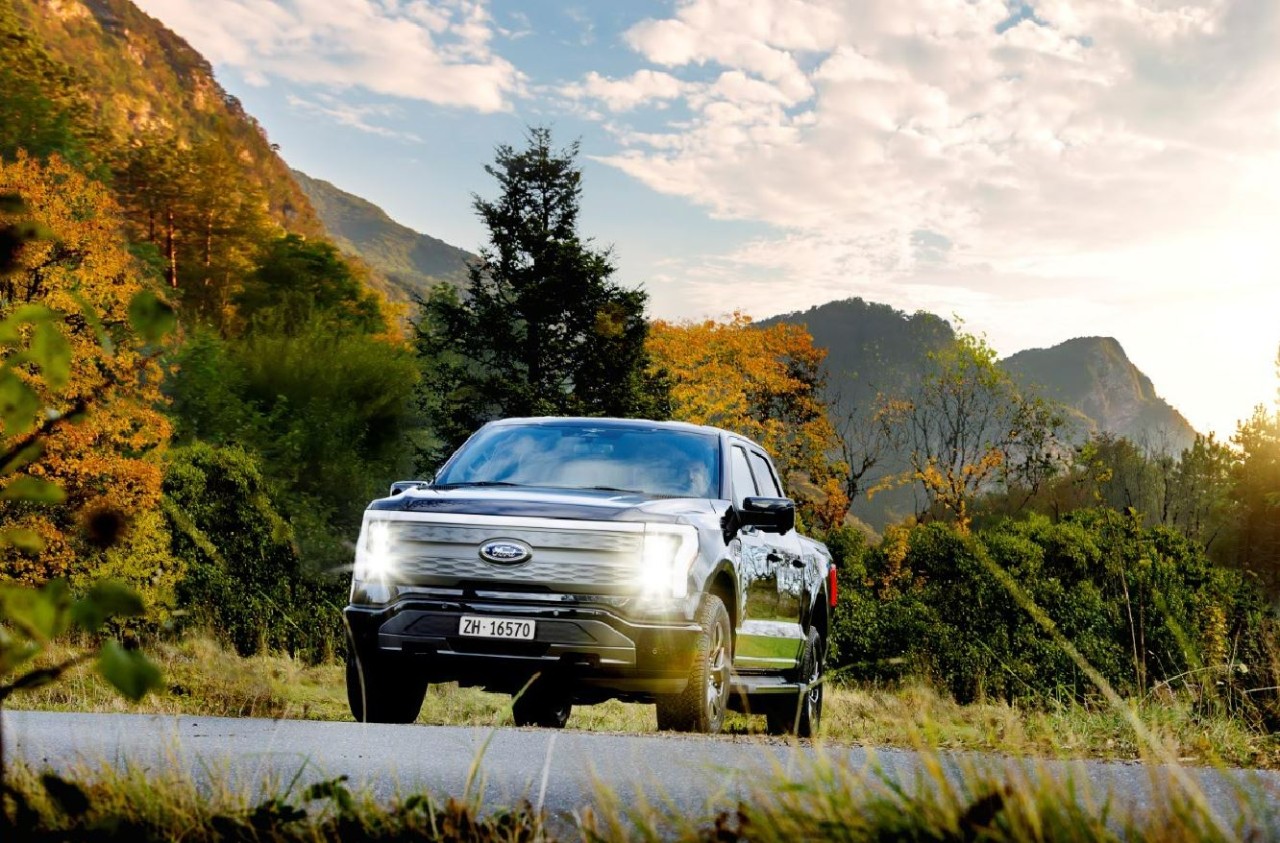
Ford is canceling the all-electric F-150 Lightning and also announced it would take a $19.5 billion charge as it aims to quickly restructure its strategy regarding electrification efforts, a massive blow for the Detroit-based company that was once one of the most gung-ho on transitioning to EVs.
The announcement comes as the writing on the wall seemed to get bolder and more identifiable. Ford was bleeding money in EVs and, although it had a lot of success with the all-electric Lightning, it is aiming to push its efforts elsewhere.
It will also restructure its entire strategy on EVs, and the Lightning is not the only vehicle getting the boot. The T3 pickup, a long-awaited vehicle that was developed in part of a skunkworks program, is also no longer in the company’s plans.
Instead of continuing on with its large EVs, it will now shift its focus to hybrids and “extended-range EVs,” which will have an onboard gasoline engine to increase traveling distance, according to the Wall Street Journal.
“Ford no longer plans to produce select larger electric vehicles where the business case has eroded due to lower-than-expected demand, high costs, and regulatory changes,” the company said in a statement.
🚨 Ford has announced it is discontinuing production of the F-150 Lightning, as it plans to report a charge of $19.5 billion in special items.
The Lightning will still be produced, but instead with a gas generator that will give it over 700 miles of range.
“Ford no longer… pic.twitter.com/ZttZ66SDHL
— TESLARATI (@Teslarati) December 15, 2025
While unfortunate, especially because the Lightning was a fantastic electric truck, Ford is ultimately a business, and a business needs to make money.
Ford has lost $13 billion on its EV business since 2023, and company executives are more than aware that they gave it plenty of time to flourish.
Andrew Frick, President of Ford, said:
“Rather than spending billions more on large EVs that now have no path to profitability, we are allocating that money into higher returning areas, more trucks and van hybrids, extended range electric vehicles, affordable EVs, and entirely new opportunities like energy storage.”
CEO Jim Farley also commented on the decision:
“Instead of plowing billions into the future knowing these large EVs will never make money, we are pivoting.”
Farley also said that the company now knows enough about the U.S. market “where we have a lot more certainty in this second inning.”
News
SpaceX shades airline for seeking contract with Amazon’s Starlink rival

SpaceX employees, including its CEO Elon Musk, shaded American Airlines on social media this past weekend due to the company’s reported talks with Amazon’s Starlink rival, Leo.
Starlink has been adopted by several airlines, including United Airlines, Qatar Airways, Hawaiian Airlines, WestJet, Air France, airBaltic, and others. It has gained notoriety as an extremely solid, dependable, and reliable option for airline travel, as traditional options frequently cause users to lose connection to the internet.
Many airlines have made the switch, while others continue to mull the options available to them. American Airlines is one of them.
A report from Bloomberg indicates the airline is thinking of going with a Starlink rival owned by Amazon, called Leo. It was previously referred to as Project Kuiper.
American CEO Robert Isom said (via Bloomberg):
“While there’s Starlink, there are other low-Earth-orbit satellite opportunities that we can look at. We’re making sure that American is going to have what our customers need.”
Isom also said American has been in touch with Amazon about installing Leo on its aircraft, but he would not reveal the status of any discussions with the company.
The report caught the attention of Michael Nicolls, the Vice President of Starlink Engineering at SpaceX, who said:
“Only fly on airlines with good connectivity… and only one source of good connectivity at the moment…”
CEO Elon Musk replied to Nicolls by stating that American Airlines risks losing “a lot of customers if their connectivity solution fails.”
American Airlines will lose a lot of customers if their connectivity solution fails
— Elon Musk (@elonmusk) December 14, 2025
There are over 8,000 Starlink satellites in orbit currently, offering internet coverage in over 150 countries and territories globally. SpaceX expands its array of satellites nearly every week with launches from California and Florida, aiming to offer internet access to everyone across the globe.
Currently, the company is focusing on expanding into new markets, such as Africa and Asia.
News
Tesla Model Y Standard stuns in new range test, besting its Premium siblings
Tesla’s newer vehicles have continued to meet or exceed their EPA estimates. This is a drastic change, as every 2018-2023 model year Tesla that Edmunds assessed did not meet its range estimates.
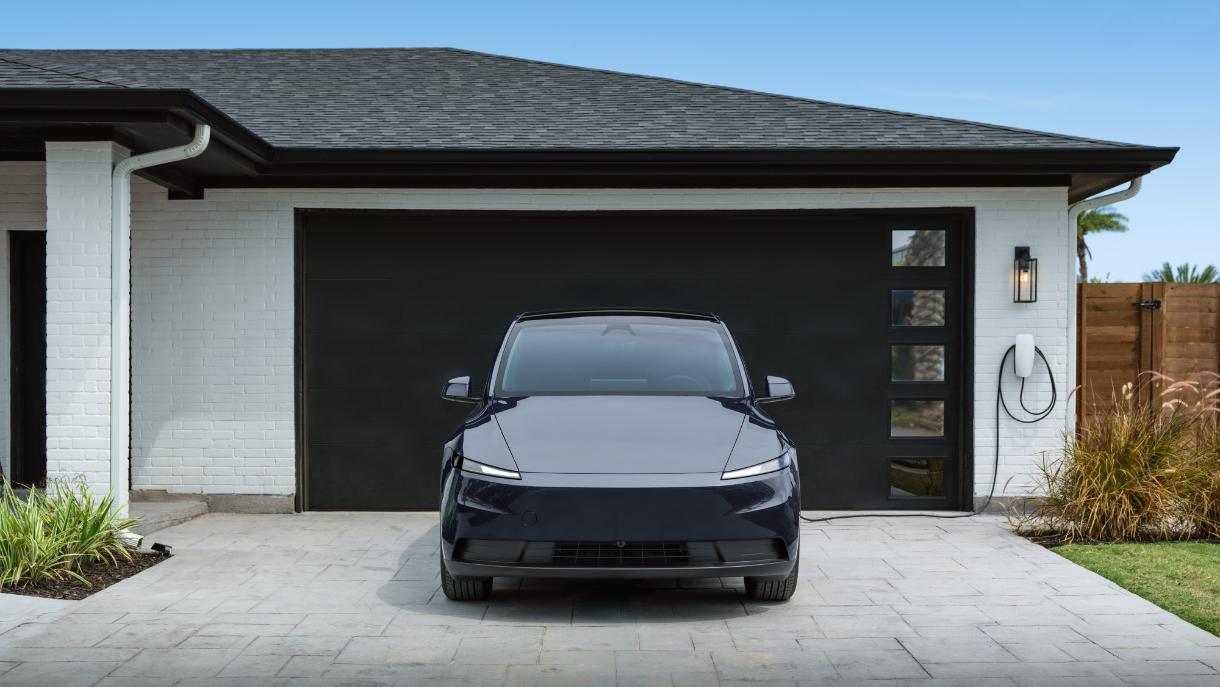
The Tesla Model Y Standard stunned in a new range test performed by automotive media outlet Edmunds, besting all of its Premium siblings that are more expensive and more luxurious in terms of features.
Testing showed the Model Y Standard exceeded its EPA-estimated range rating of 321 miles, as Edmunds said it is the “longest-range Model Y that we’ve ever put on our loop.” In the past, some vehicles have come up short in comparison with EPA ranges; for example, the Model Y’s previous generation vehicle had an EPA-estimated range of 330 miles, but only drove 310.
Additionally, the Launch Series Model Y, the first configuration to be built in the “Juniper” program, landed perfectly on the EPA’s range estimates at 327 miles.
It was also more efficient than Premium offerings, as it utilized just 22.8 kWh to go 100 miles. The Launch Series used 26.8 kWh to travel the same distance.
It is tested using Edmunds’ traditional EV range testing procedure, which follows a strict route of 60 percent city and 40 percent highway driving. The average speed throughout the trip is 40 MPH, and the car is required to stay within 5 MPH of all posted speed limits.
Each car is also put in its most efficient drive setting, and the climate is kept on auto at 72 degrees.
“All of this most accurately represents the real-world driving that owners do day to day,” the publication says.
With this procedure, testing is as consistent as it can get. Of course, there are other factors, like temperature and traffic density. However, one thing is important to note: Tesla’s newer vehicles have continued to meet or exceed their EPA estimates. This is a drastic change, as every 2018-2023 model year Tesla that Edmunds assessed did not meet its range estimates.
Tesla Model Y Standard vs. Tesla Model Y Premium
Tesla’s two Model Y levels both offer a great option for whichever fits your budget. However, when you sit in both cars, you will notice distinct differences between them.
The Premium definitely has a more luxurious feel, while the Standard is stripped of many of the more premium features, like Vegan Leather Interior, acoustic-lined glass, and a better sound system.
You can read our full review of the Model Y Standard below:
Tesla Model Y Standard Full Review: Is it worth the lower price?
